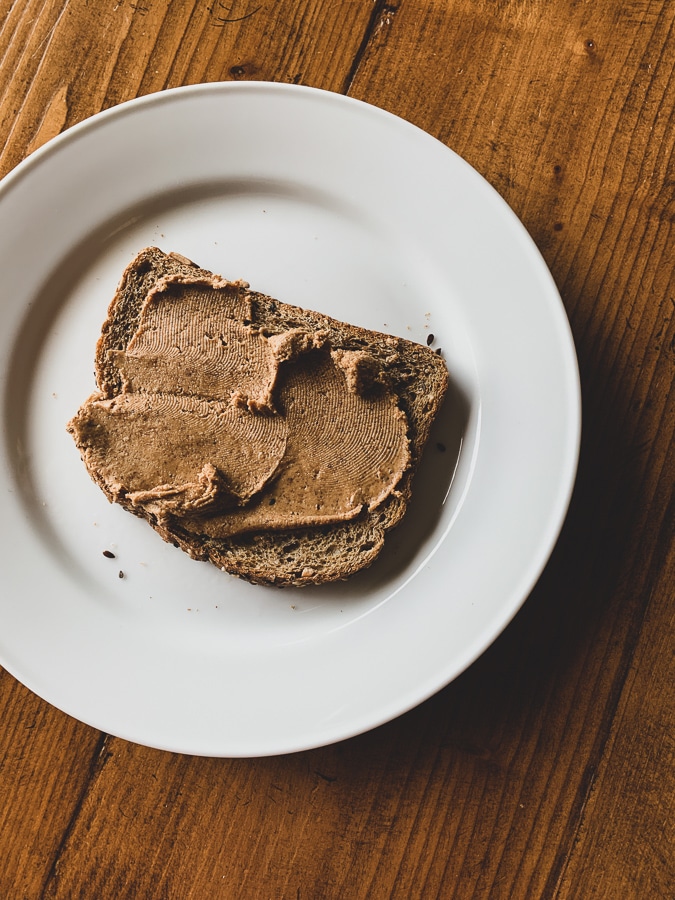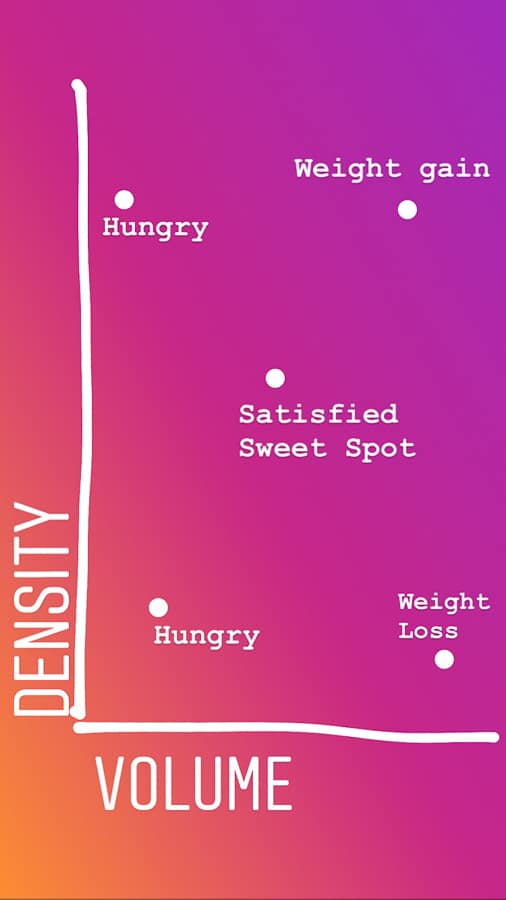Weight Change: Density + Volume

How To Gain Weight
I was talking with a friend about weight change the other day. We were actually discussing ways to gain weight. When you need to gain weight, you can add some extra snacks, but you can only eat so much volume. Your stomach can’t expand beyond a certain point, and you certainly don’t want to walk around uncomfortably stuffed all the time. So what do you do? You increase the energy (a.k.a. calorie) density of your foods. You eat more trail mix or nut butters or smoothies packed with foods higher in calories and lower in water. Rather than watermelon you want to eat dried fruit dehydrated of water but dense in nutrients and calories. Makes perfect sense right?
But what about weight loss?
If the weight gain plan seems so simple, why does the weight loss plan seem so much more complicated? Just like our stomachs can only get so big, they also can’t go empty. We can’t go from eating a usual volume of food to not eating at all. Walking around with a grumbling stomach would also be very uncomfortable and would devoid us of critical nutrients. Thus, instead of focusing on changing the volume of foods you eat, focus on changing the density. Choose foods (like watermelon) that DO have a lot of water and are less dense than those mentioned above. That doesn’t mean you can’t eat protein smoothies and peanut butter, obviously, but you do need to be more mindful of volume – or portion size – when you eat something dense.
Volumetrics
This isn’t a new concept. Barbara Rolls, PhD coined the concept of Volumetrics years ago. Her books teach you how to make choices based on energy and nutrient density. (Read a good overview here.) Volumetrics doesn’t mean eating pounds of celery or whole bags of fat-free popcorn, but it means choosing foods that are high in water and lower in fat (aka calorie density). When you make that swap, you can eat a similar volume and slowly, almost without noticing, lose weight.
There Are Many Factors That Lead To Satiety
- How hungry you were before the meal
- What you drink before and during your meal
- If you sat down at a table and ate mindfully or quickly ate your meal in a parking lot
- How your brain interpreted the sight, smell, texture, and flavor of the meal
The list goes on. The energy density of your meal is not the only factor that determines if you feel satisfied when it’s over. But if you look at the big picture, meals with high density and high volume consumed over and over will be more likely to lead to weight gain. And meals with lower density and high volume will be satisfying and more likely to lead to weight maintenance or loss.

The Balance Of Density and Volume Often Comes Naturally
Don’t overthink it. If you have a huge breakfast buffet, you’re probably going to reach for a lighter lunch without thinking about it. Seasonal eating is also a reflection of this – most of us crave water-based fresh produce in the summer and richer comfort foods in the winter. We make lots of choices all day long about what to eat. Should I have this or that? What am I craving? What sounds good? What needs eating? What is the quickest? Most of us have the freedom and privilege of choice on what to eat every time hunger calls. The sum of these little choices is what changes our weight up and down.
We are the product of the thousands of choices we make all day, every day.
What have you found in you own life experiments? How do you feel when you eat dense foods verses watery foods? Does anything surprise you?
Other Nutrition Posts You Might Enjoy:
- The Squiggly Line Effect
- Revisiting Intuitive Eating
- Nutrition Compromises
- Healthy Habits, Healthy Life
- What Are You Really Hungry For?
- Healthy On The Weekends
- How To Gain And Lose 5 Pounds
- The Crossroads Of Happy And Healthy
- Weight It Out: The Math Behind Holiday Weight Gain
The post Weight Change: Density + Volume appeared first on Kath Eats Real Food.
from Kath Eats Real Food https://ift.tt/2MKei8G
Comments
Post a Comment